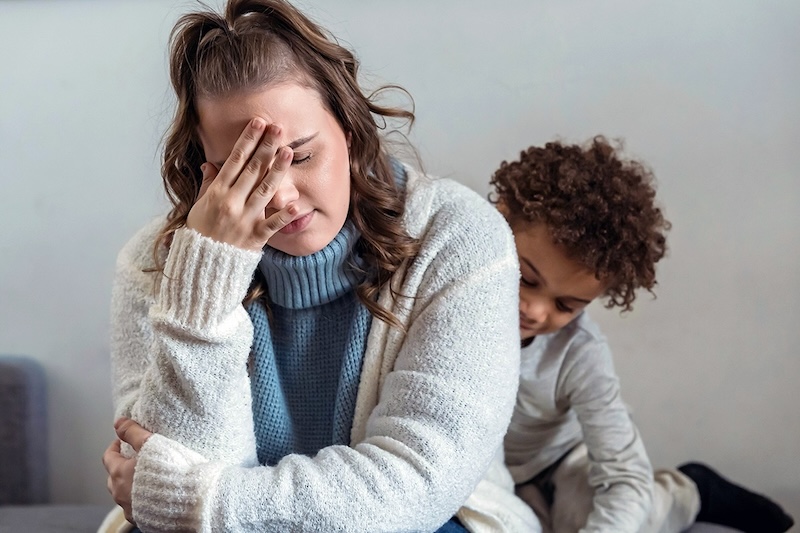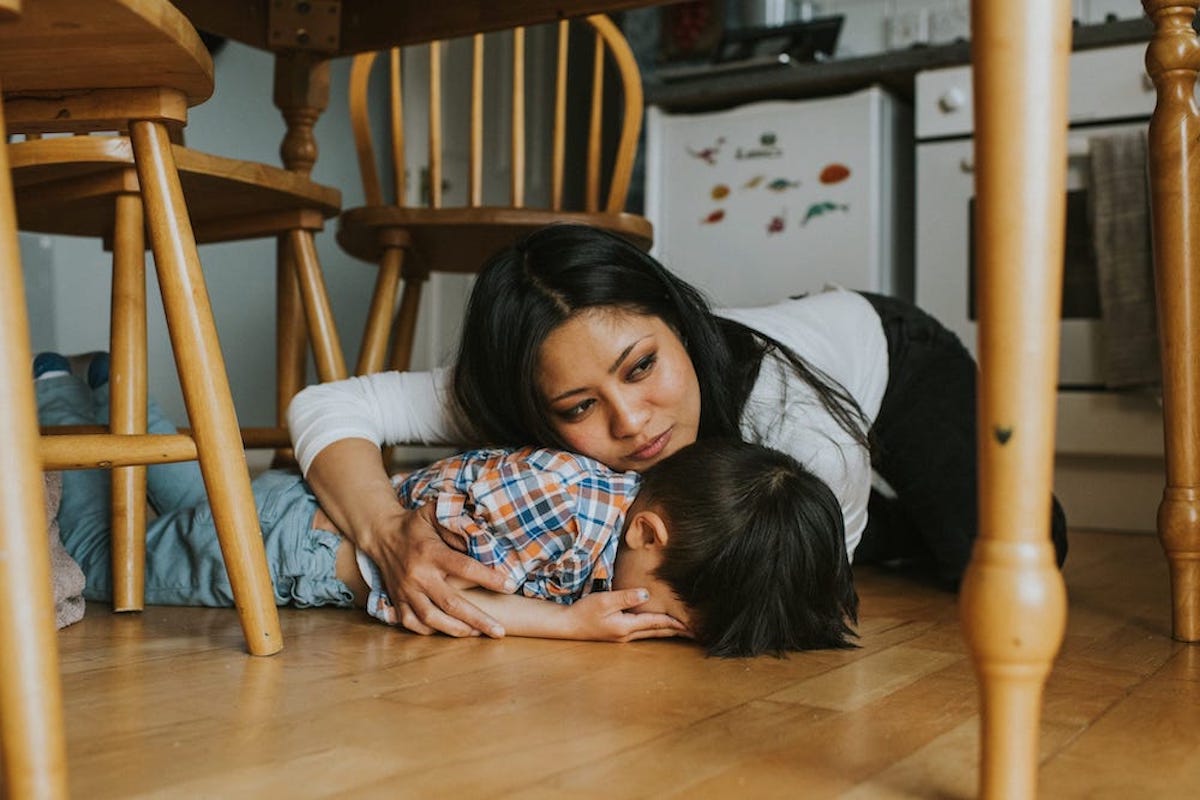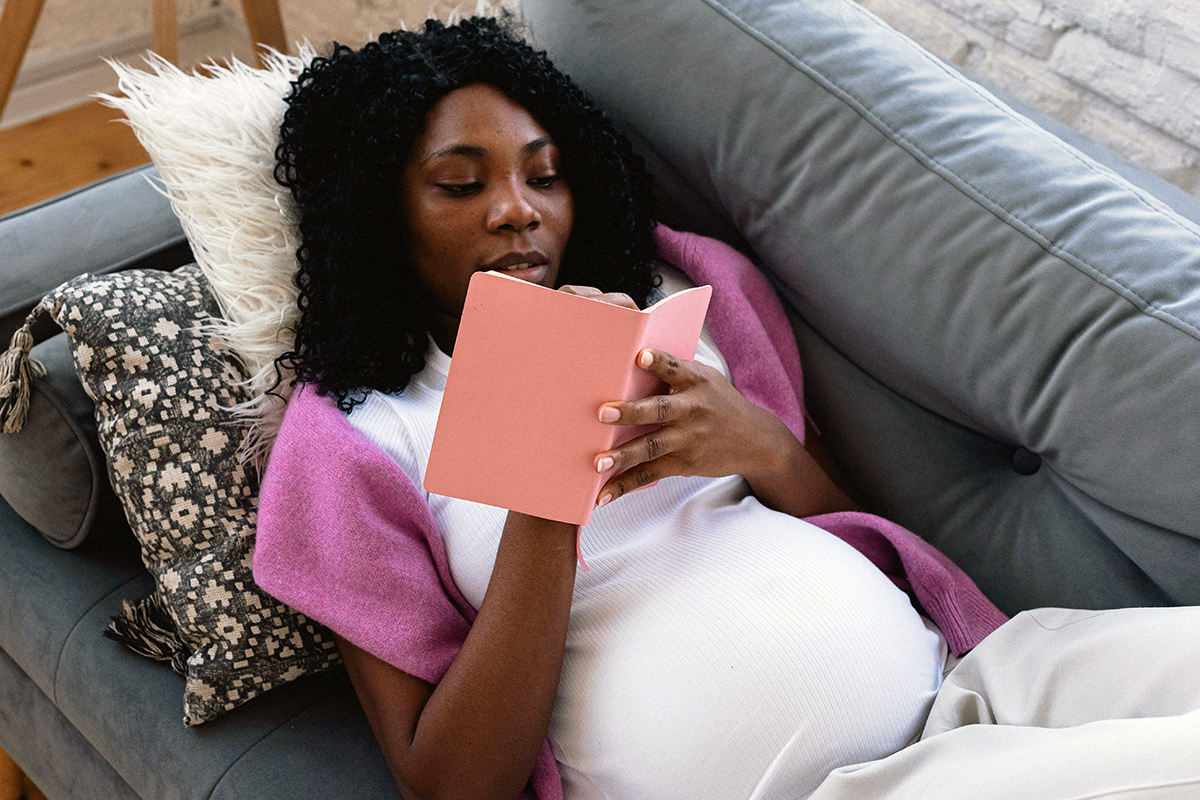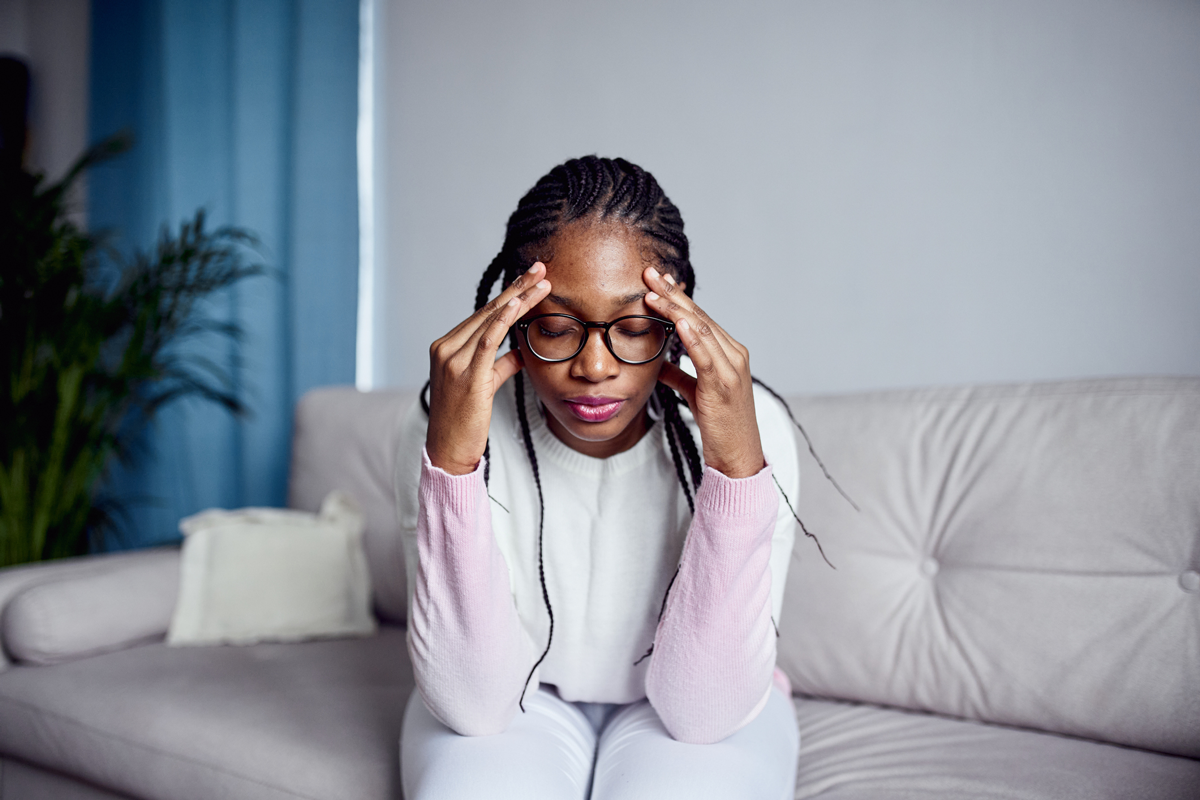Several weeks ago, the U.S. surgeon general, Dr. Vivek Murthy, released an advisory raising concerns about the mental health of parents. It begins with a basic fact — reported stress levels are higher in parents than non-parents — and goes on to discuss the lack of parental support in this country. The goal, as is common with these advisories, is to raise awareness and advocate for more work to help find solutions.
This advisory really resonated — parents are stressed, that much is clear — but exactly what the core issue is, I think, remains unclear. One argument: the main issue is structural lack of support for things like child care and parental leave. A second argument: a main issue is the pressure we put on parents related to their children’s achievement. There’s too much of a push to be there for your child’s every need; parents have no space for themselves.

These may both be right! But they are fundamentally different in terms of how we might “fix” them. If the problem is that parents are stressed because their kid might not excel in school, that won’t be fixed with child care subsidies. On the other hand, if the main issue is that parents cannot find a comfortable and stable place for their 3-year-old to spend the day, we won’t fix that by helping people understand that being the valedictorian isn’t actually that important.
My work is in research and evidence, and — for me — it seems clear that we’d understand this problem better if we could flesh out the data just a bit more. That’s the exercise for today: to go one step beyond the “parents are more stressed than non-parents” fact. I’ll come back to the big picture at the end.
Where did I pull this data from?
The surgeon general’s fact about parental stress comes from data from the American Psychological Association, which has an ongoing survey of stress going back to 2017. What’s great about the survey is that it uses a validated series of questions to get a detailed measure of stress. For my purposes, though, I needed a larger sample size with more demographic data available. So I pulled up data from the Behavioral Risk Factor Surveillance System — the BRFSS (pronounced, in my view and to the joy of my 9-year-old, “barf-us”).
The BRFSS is a yearly phone survey run by the CDC covering about 400,000 people a year. The goal is to collect data on health-related risk behaviors, chronic disease, and health outcomes. This is a long-standing and high-quality survey, albeit with the standard concerns one would have about a phone survey on self-reported outcomes.
The BRFSS has two useful measures of mental health. First, in 2023, the researchers asked directly about stress with this question:
Stress means a situation in which a person feels tense, restless, nervous, or anxious, or is unable to sleep at night because his/her mind is troubled all the time. Question: Within the last 30 days, how often have you felt this kind of stress?
The possible responses ranged from “never” to “always.” I will code people as “stressed” if they report this level of stress sometimes, usually, or always.
Second, for many years the BRFSS has asked people the number of days in the past 30 in which their mental health was generally “not good.” This does not only capture stress, although stress is one component of mental health it specifies. This number of days will be a second measure of parent mental health.
The BRFSS collects information about children in the household, which I will use to proxy for whether the respondent is a parent, and it gets information on income, marital status, and gender.
What role do demographics play in stress?
To begin with the basic fact: people who have children in their household are more likely to report high levels of stress than those without: 42% of people in a household with at least one child under 18 reported stress sometimes, usually, or always, versus only 32% of those without a child under 18.
The primary difference in stress is between households with no children and those with any children. Adding more children doesn’t seem to impact the numbers very much (actually, households with four children are slightly lower-stress than those with one child).
So far, this is just echoing what we already know. Turning now to income: the graph below shows the share of people reporting this higher level of stress by annual household income level, for households with and without children.
There are at least two notable takeaways here. First: poverty is an enormous stressor. Period. Whether or not there are children in the household, the stress level for people with household incomes of below $15,000 a year is enormously higher than for higher-income households. As income increases, stress decreases. These effects are much, much larger than the effects of having children. Poorer households without children are far more stressed than richer households with children.
Second, there are differences in stress levels between households with and without children at all income levels, but they are largest in the lower-middle income range. The biggest parent stress disadvantage is in households with an income of $35,000 to $50,000; in this group, parents are almost 16 percentage points more likely to register as stressed.
We see similar patterns in education and in marital status. Single people and those with less education are more stressed, whether parents or not (but within both groups, parents report higher stress than non-parents, on average).
The BRFSS also allows for data by race — the graph below shows the share reporting higher levels of stress for households with and without children by race. Stress levels are higher, on average, for non-white households. The gap between households with and without children is larger for white and Black households than for Hispanic households and households of other races. More evidence would be necessary to understand why this might be.
Stress by demographics takeaways:
- Poverty is an enormous driver of stress.
- Households with children are consistently more stressed than those without, with the largest gaps appearing in households with incomes in the $35,000-to-$50,000 range. Hispanic households show a smaller stress gap between households with and without children.
How does stress vary by state?
The BRFSS collects data from each state. Using this, I calculated the difference in stress levels for households with and without children by state. I think of this as a “child stress cost,” by state. The table below shows the “best” and “worst” states by this metric.
There are clear variations across states. In Illinois, the difference is about 5 percentage points, whereas in Arkansas it’s 14. But looking at this list, it isn’t obvious that there is a clear takeaway. The states that perform worse are disproportionately in the South, but not exclusively. There is no clear political lineup (both the best and worst states are more red than blue). Maybe someone with more insight than me can pull something from this!
(I also want to give a shoutout here to the state with the lowest households-with-children stress level, as well as the lowest overall stress level: North Dakota. Louisiana is the highest parental stress state overall).
Stress by state takeaway:
- Parents, move to Illinois. Or possibly North Dakota.
Has parental mental health gotten worse over time?
Finally: variation over time. The direct question on stress was only asked in 2023, so this over-time variation focuses on a more general measure of mental health — based on a question that asked about the number of days in the past 30 in which the person felt poor mental health. The majority of people say they do not have any days like this; to better capture a metric similar to the stress measure above, I’ll define poor mental health as having more than one day a month with this poor mental health. (The patterns look very similar if you look at people with any days, or count the days.)
The graph below shows the share of people in this group, for households with and without children, from 1996 to 2023.
Poor mental health has gone up over time, in both groups. Compared with 1996, the share of people reporting worse mental health is up about 10 percentage points by this measure. That’s a lot, and it’s something to be worried about. This increase has been somewhat larger in households with children. The increasing gap appears by 2019, so while it might be the pandemic, it’s not just the pandemic.
Stress over time takeaway:
- Although stress is generally higher for households with children, which isn’t surprising, this problem has gotten worse over time — which I think is part of the reason this advisory feels so important.
Closing thoughts
To come back to the beginning: the time trends here make clear why this advisory is important. The demographics, though, continue to tell us something about the core issues. The overwhelming differences in stress levels by income — and the higher child-household stress in the middle of the income distribution — suggest that policies to better support families have to come first.
Exactly what that looks like may be the harder question.
Community Guidelines



















Log in
Could you post the state excess stress data for all 50 states? Would be curious to look more closely. Simple list or csv would be great.
I don’t want to diminish the very real stress that parents feel today (and especially during Covid, which — as another commenter pointed out — we’ve never really recovered from). And I think it’s important to put this data in a broader historical context. One thing parents in the United States no longer need to worry about is child mortality from a variety of illnesses that we can now prevent or treat effectively. For millennia (and even today, in some places), many parents lost many infants and children to early, and now preventable, death. I cannot even begin to imagine how stressful that would be.
Since this is all based on self reporting rather than some imaginary futuristic tool that can actually continuously measure physical stress, i wonder how much of this data changes depending on the social acceptance of people voicing their stress and anxiety. It seems like women today are generally more comfortable admitting when they need help or are feeling stress when previous generations felt that they needed to keep those feelings to themselves and always put on a happy face. Even given an anonymous survey, these societal pressures would surely impact responses.
It looks like parents mental health issues went up at the same time as teens mental health issues went up (based on other data I’ve seen). Some have implicated the rise of social media and smart phones in causing the current teen mental health crisis. Curious if the same is contributing to parents mental health getting worse…
This part in the beginning:
One argument: the main issue is structural lack of support for things like child care and parental leave. A second argument: a main issue is the pressure we put on parents related to their children’s achievement. There’s too much of a push to be there for your child’s every need; parents have no space for themselves.
I think an argument could be made that this is the same problem. There maybe some parents out there who are adding extra stress to their lives by wanting their kid to be the best, but I’d guess the majority of us just want them to have the life skills they need to support themselves as adults and have healthy relationships. It does often feel though that as parents we are alone in our responsibility to teach them this. That is where the lack of structural support comes in. It’s parental leave and affordable daycare, but it’s also quality schools, affordable food and healthcare. It’s sick time. It’s mental health for kids. If the problem is parents are having to cater to their kids every needs and have no space for themselves, then as these are needs the solution would rely on finding a way for others to help meet those needs and not putting it all on the parents, i.e. more structural support.
Seems to me, per that over-time graph at the end, that “we” haven’t recovered from Covid, from a mental health perspective (among many other aspects). Why there hasn’t been — at an absolute minimum — any global commemoration is beyond me.
What if we broke down the data by age of children? We’d know more about child care stress if we broke it down into infants, pre-school, school age, etc. We might also overlay the map with child care prices. We could also look at local income inequality. I wonder if those steps might yield more insight.
Honestly I feel kind of insulted at the implication (not by Emily, but in the media) that the problem is we are too competitive about our kids. We’re stressed, and the issue is we have bad values? Thanks.
Yes, this would all be great — I think there is a core data issue here. These data are helpful but incomplete (we actually do not know the ages of kids, for example, other than counts under 18). I’d love to see a large scale study which was more focused on this AND collected information on child care options and prices, etc. Painting a realistic picture of what families are dealing with would be hugely useful for making it stark.
Hmm, interesting article and data, but I have to take issue with parts of it. Starting with:
“The gap between households with and without children is larger for white and Black households than for Hispanic households and households of other races.”
This makes it sound like there is still a parental stress gap for Hispanics, but the data in the chart shows zero stress gap for this population. (In fact it reverses slightly, but I assume the difference is not statistically significant.)
Second, regarding the state-by-state variation, wouldn’t it make more sense to back out the other factors mentioned? We already know that there is zero stress gap for Hispanics, might the lower stress gap for a state like New Mexico be driven by the fact 50% of the population identifies as Hispanic? Without any kind of regression or factor analysis, we really don’t know. The quip to “move to Illinois” or North Dakota, while intended to be humorous, may give the wrong impression that location is driving this gap when it may be other factors.
I applaud you for digging deeper into this than the average article of pop-science, and it’s not like this was meant to be some in-depth exposé. But for a paid subscription from someone with a background in “research and evidence”, the research and evidence in this seems a bit weak.
The other obvious factor to cross-reference in terms of states would be household incomes in those states. Illinois is a relatively rich state with not the highest CoL, West Virginia is pretty well known to be poor. I honestly think a lot of the “excess stress” is just that children cost a lot of money, frankly.
Thanks for this. The cross state comparisons look very similar if you include controls, although as the user below points out the ideal controls would be things like child care costs, which this data set does not have. Obviously better data with more variables would be preferable here, and would be necessary if someone wanted to dive into a research study on this.
I am definitely more stressed as a parent than I was without children. And with two, the stress has definitely increased (that may be due to their relatively close ages – 2 under 3 right now). I never used to have physical manifestations of stress but I do now. And when there are things like natural disasters or events, the stress level skyrockets. A large part of it is financial – it’s expensive to have 2 kids in daycare and we needed a larger car to be able to travel with them – car payments have increased. The best support for me would be to have financial support for daycare/daily care and to have support when i need to miss work to look after a sick child or children.
This is really interesting and makes me wonder if we see the same time trend in other countries. It would also be really interesting to see what the state ranking is once controlled for the demographic factors…